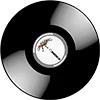Showbiz News | Page: 11
Eurovision 2025 has officially begun in Switzerland
 The 69th Eurovision Song Contest has officially begun in Basel, Switzerland. This grand musical event is being hosted at the “St. Jakobshalle” arena, which accommodates around 14,000 spectators. This year, audiences can expect a spectacular show, the participation of 37 countries, and a variety of vibrant performances from artists across Europe and beyond.
Show schedule:
First Semi-Final: 13 May 2025 (Tuesday)
Second Semi-Final: 15 May 2025 (Thursday)
Grand Final: 17 May 2025 (Saturday)
All performances begin at 22:00 Kyiv time.
Who is participating and how the selection works:
Six countries have automatically qualified for the Grand Final: the United Kingdom, Germany, France, Italy, Spain, and Switzerland — the host nation. The remaining 31 countries will compete...
The 69th Eurovision Song Contest has officially begun in Basel, Switzerland. This grand musical event is being hosted at the “St. Jakobshalle” arena, which accommodates around 14,000 spectators. This year, audiences can expect a spectacular show, the participation of 37 countries, and a variety of vibrant performances from artists across Europe and beyond.
Show schedule:
First Semi-Final: 13 May 2025 (Tuesday)
Second Semi-Final: 15 May 2025 (Thursday)
Grand Final: 17 May 2025 (Saturday)
All performances begin at 22:00 Kyiv time.
Who is participating and how the selection works:
Six countries have automatically qualified for the Grand Final: the United Kingdom, Germany, France, Italy, Spain, and Switzerland — the host nation. The remaining 31 countries will compete...
Funk vs Phonk: What’s the difference between two genres with similar names?
 Despite certain sonic similarities, the musical styles Funk and Phonk represent two completely different universes — in sound, meaning, and cultural roots. Today, we’ll break down the differences between sunny funk and dark phonk, and explain why confusing the two is like comparing disco to trap.
Funk — the energy of body and soul
The funk genre originated in the United States in the late 1960s. Its pioneers include legends such as James Brown, Sly & The Family Stone, and Parliament-Funkadelic. Funk quickly became a symbol of freedom, movement, and celebration. The core characteristics of funk include:
Live instrumentation: powerful basslines, drums, guitars, and brass sections.
Rhythm: a strong emphasis on “groove” — the feeling of swing and dan...
Despite certain sonic similarities, the musical styles Funk and Phonk represent two completely different universes — in sound, meaning, and cultural roots. Today, we’ll break down the differences between sunny funk and dark phonk, and explain why confusing the two is like comparing disco to trap.
Funk — the energy of body and soul
The funk genre originated in the United States in the late 1960s. Its pioneers include legends such as James Brown, Sly & The Family Stone, and Parliament-Funkadelic. Funk quickly became a symbol of freedom, movement, and celebration. The core characteristics of funk include:
Live instrumentation: powerful basslines, drums, guitars, and brass sections.
Rhythm: a strong emphasis on “groove” — the feeling of swing and dan...
Channel 4 Is Preparing a Documentary About Taylor Swift: Becoming Taylor Swift
 Taylor Swift, one of the most influential singers of our time, is back in the spotlight — this time thanks to the British TV channel Channel 4, which has announced the release of a major documentary titled “Becoming Taylor Swift”. The premiere is expected in December 2025, perfectly timed for the Christmas season.
The film promises to trace Taylor Swift’s journey from a modest country singer from Pennsylvania to a global superstar whose albums consistently top the charts and whose concert tours break box-office records. According to the producers, the documentary will not be just another “fan tribute,” but will instead offer a deep, honest, and objective look at her career, personal life, controversies, creative transformations, and the phenomenon of her...
Taylor Swift, one of the most influential singers of our time, is back in the spotlight — this time thanks to the British TV channel Channel 4, which has announced the release of a major documentary titled “Becoming Taylor Swift”. The premiere is expected in December 2025, perfectly timed for the Christmas season.
The film promises to trace Taylor Swift’s journey from a modest country singer from Pennsylvania to a global superstar whose albums consistently top the charts and whose concert tours break box-office records. According to the producers, the documentary will not be just another “fan tribute,” but will instead offer a deep, honest, and objective look at her career, personal life, controversies, creative transformations, and the phenomenon of her...
Beyoncé, The Weeknd and Dua Lipa set the tone for spring 2025: what is the whole world listening to?
 April 2025 marked a powerful start to the new music season: several high-profile releases stormed the global charts at once, setting fresh trends in pop and dance music.
Beyoncé releases the album "Electric Queen", blending disco, house, and cyber R&B
The new project by Beyoncé is a return to the roots of club culture with elements of futuristic sound design. Critics are already calling the album a “manifesto of the post-internet diva,” while the music video for “Neon Empire” surpassed 20 million views within its first 24 hours.
The Weeknd — an unexpected funk comeback in the spirit of Prince
Abel Tesfaye delighted fans with the new EP “Velvet Lights”, inspired by the sound of the 1980s. The title track is already leading the Spot...
April 2025 marked a powerful start to the new music season: several high-profile releases stormed the global charts at once, setting fresh trends in pop and dance music.
Beyoncé releases the album "Electric Queen", blending disco, house, and cyber R&B
The new project by Beyoncé is a return to the roots of club culture with elements of futuristic sound design. Critics are already calling the album a “manifesto of the post-internet diva,” while the music video for “Neon Empire” surpassed 20 million views within its first 24 hours.
The Weeknd — an unexpected funk comeback in the spirit of Prince
Abel Tesfaye delighted fans with the new EP “Velvet Lights”, inspired by the sound of the 1980s. The title track is already leading the Spot...
Eurovision: Winners of the Last 30 Years (1995–2024)
 The international song contest “Eurovision” brings together millions of viewers around the world every year, offering a unique blend of music, culture, and spectacular showmanship. Since its founding in 1956, the contest has become a platform for artists seeking to represent their countries and win the hearts of a European audience.
On May 11, 2024, the final of the 68th Eurovision Song Contest took place in Malmö, Sweden. The winner was the Swiss artist Nemo with the song “The Code”, scoring 591 points. This marked Switzerland’s third victory in the history of the contest, following previous wins in 1956 and 1988.
Nemo became the first openly non-binary performer to win Eurovision, a milestone event in the contest’s history. The song “The Cod...
The international song contest “Eurovision” brings together millions of viewers around the world every year, offering a unique blend of music, culture, and spectacular showmanship. Since its founding in 1956, the contest has become a platform for artists seeking to represent their countries and win the hearts of a European audience.
On May 11, 2024, the final of the 68th Eurovision Song Contest took place in Malmö, Sweden. The winner was the Swiss artist Nemo with the song “The Code”, scoring 591 points. This marked Switzerland’s third victory in the history of the contest, following previous wins in 1956 and 1988.
Nemo became the first openly non-binary performer to win Eurovision, a milestone event in the contest’s history. The song “The Cod...
Minatrix.FM Birthday
 Hello, dear listener of Minatrix.FM online radio!
On this day, December 12, 2010, the world heard the very first broadcast of Minatrix Radio. Since then, a lot has changed. There were highs and lows, large-scale parties and periods of silence, but after all these years we are still here — moving forward, celebrating another birthday with renewed strength and major updates.
I am proud to say that we are the largest club music portal in Ukraine and the only one that managed to stay afloat in such difficult times. TopDJ has shut down, and the popular portal Progressive People now belongs to us :) Thanks to our platform, artists can continue to present themselves to the world — something especially important for emerging talents.
In honor of the radio’s birthday, every visito...
Hello, dear listener of Minatrix.FM online radio!
On this day, December 12, 2010, the world heard the very first broadcast of Minatrix Radio. Since then, a lot has changed. There were highs and lows, large-scale parties and periods of silence, but after all these years we are still here — moving forward, celebrating another birthday with renewed strength and major updates.
I am proud to say that we are the largest club music portal in Ukraine and the only one that managed to stay afloat in such difficult times. TopDJ has shut down, and the popular portal Progressive People now belongs to us :) Thanks to our platform, artists can continue to present themselves to the world — something especially important for emerging talents.
In honor of the radio’s birthday, every visito...
Lady Gaga is a dutiful daughter to her parents.
 Lady Gaga lives by the tenets of Andy Warhol, considers herself a die-hard futurist and a bit of a robot. She was also the brightest pop star of 2009. Still, for people poring over her photos, that’s probably the last thing they care about.
Lady Gaga is one of the most striking and controversial performers on today’s stage, yet—as she openly tells magazines and TV networks—she’s also a good, obedient daughter to her parents. It turns out she can be not only an extravagant artist but also a devoted daughter.
The 25-year-old star maintains a fairly close relationship with her parents. Recently, the singer revealed a secret about her tattoos. She admitted she got deeply into tattoo culture, but all her designs are placed only on the left side of her body. You can...
Lady Gaga lives by the tenets of Andy Warhol, considers herself a die-hard futurist and a bit of a robot. She was also the brightest pop star of 2009. Still, for people poring over her photos, that’s probably the last thing they care about.
Lady Gaga is one of the most striking and controversial performers on today’s stage, yet—as she openly tells magazines and TV networks—she’s also a good, obedient daughter to her parents. It turns out she can be not only an extravagant artist but also a devoted daughter.
The 25-year-old star maintains a fairly close relationship with her parents. Recently, the singer revealed a secret about her tattoos. She admitted she got deeply into tattoo culture, but all her designs are placed only on the left side of her body. You can...

